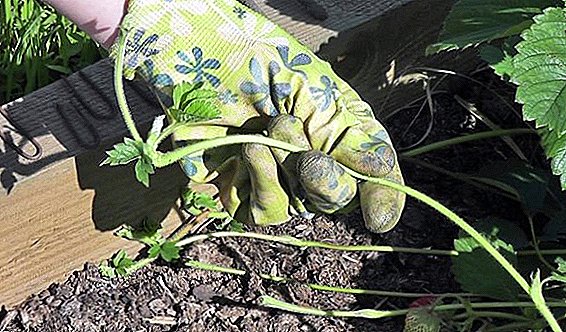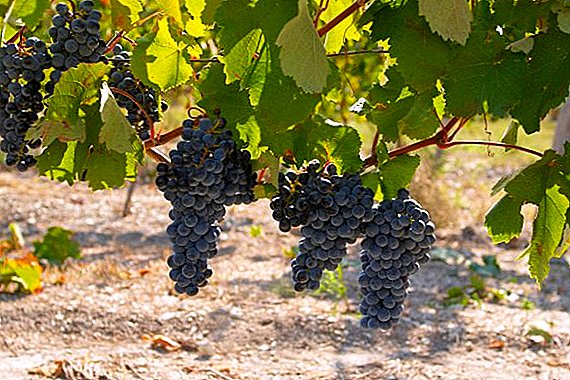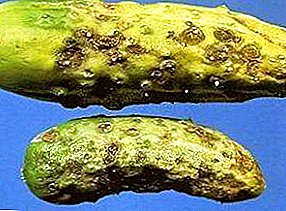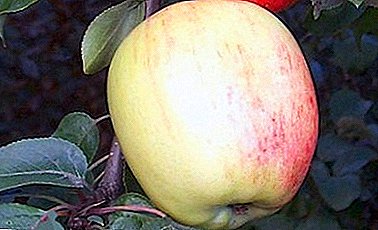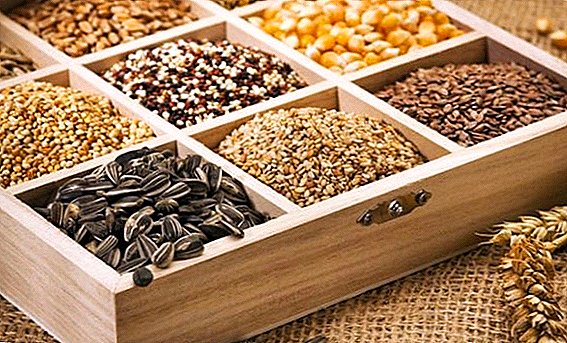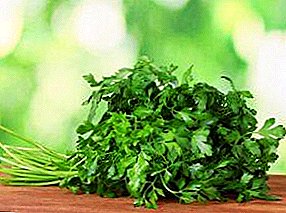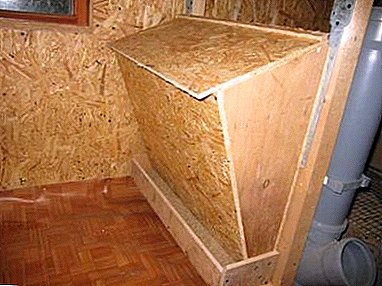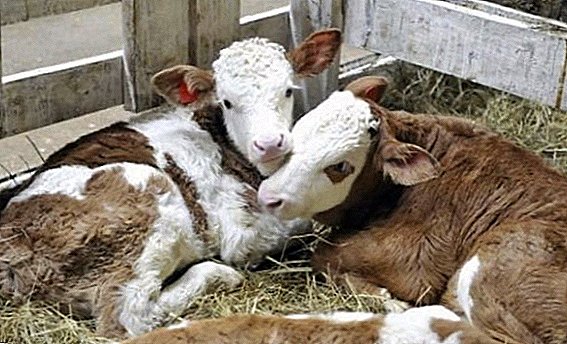 Gastroenteritis is a fairly common disease of young cattle, which, with delayed therapy, can even lead to the death of an animal, so it is important to have at least minimal information about this disease.
Gastroenteritis is a fairly common disease of young cattle, which, with delayed therapy, can even lead to the death of an animal, so it is important to have at least minimal information about this disease.
What is gastroenteritis
Gastroenteritis (or Qatar) is an inflammatory disease of the stomach and small intestine. The disease has an infectious nature and is characterized by inflammatory processes in the gastrointestinal tract. In this case, the most dangerous consequence is dehydration, which can lead to irreversible effects in the body and death.  Digestive system of cattle
Digestive system of cattle
Causes of calves
The disease can occur for various reasons. Veterinarians distinguish the following:
- sanitary and epidemiological - adverse surrounding background, the possibility of transmission of the virus from a sick animal;
- genetic - hereditary low threshold of body resistance to viruses;
- physiological - weakness of the body;
- infectious - direct infection from various sources.
Important! The main cause of gastroenteritis in calves is improper feeding: the mode and composition of food must be balanced and consistent with the age of the animal.Toxic substances may initially be in the feed or appear during the preparation process. It can be rotted hay, spoiled return, expired concentrates, contaminated, sour or cold milk. Another cause of the disease is a sharp change of diet.

Symptoms
In any disease, the symptoms are more pronounced in acute form of the disease. Gastroenteritis is not an exception, the acute form of which can be fatal.
Read about how to deal with such diseases of the digestive tract as colibacteriosis and dyspepsia.
Acute form
Symptoms that characterize the rapid development of the disease:
- external - weakness, loss of appetite, fever (up to 40 ° C), lack of adequacy in reaction to surrounding events;
- a sign of stomach disease is persistent constipation, but gastroenteritis in the intestines is characterized by severe diarrhea with mucus and blood;
- peristalsis of the digestive tract is accelerated, there are rapid swelling or retraction of the surface of the calf's abdomen;
- animals can lie for a long time without moving or moving randomly;
- decreased pulse and arrhythmia;
- gnashing of teeth and moans.
 These symptoms should be signals for immediate action, since the further course of the disease (gradual decrease in body temperature and activity of the animal) and thickening of his blood lead to death.
These symptoms should be signals for immediate action, since the further course of the disease (gradual decrease in body temperature and activity of the animal) and thickening of his blood lead to death.
Chronic
In the chronic form of the disease, the suffering of the animal is less, but the fluctuations between improvement and deterioration exhaust the pets. Symptoms are the same as in acute form, but they are less pronounced. With a general depletion of the body, death can also occur.
Important! Proper therapy helps the animal to recover in acute gastroenteritis in 10 days, and in chronic in a month.
Diagnostics
When diagnosing, consider the following data:
- the diet of the animal (if the calf is fed, then you need to check the nutrition of his mother);
- conditions of detention;
- the occurrence and further course of the disease;
- pathological changes in the body.
 First of all, it is necessary to exclude the possible influence of intestinal infections - salmonellosis, pasteurellosis, streptococci, etc. Further, the situation with the spread of infectious diseases in the area of residence of the animal (the so-called epizootic situation) is taken into account. In the analysis of the blood of a calf, the main indicators (hemoglobin, leukocytes, erythrocytes, etc.) are determined. At the same time, the pet's body temperature is monitored.
First of all, it is necessary to exclude the possible influence of intestinal infections - salmonellosis, pasteurellosis, streptococci, etc. Further, the situation with the spread of infectious diseases in the area of residence of the animal (the so-called epizootic situation) is taken into account. In the analysis of the blood of a calf, the main indicators (hemoglobin, leukocytes, erythrocytes, etc.) are determined. At the same time, the pet's body temperature is monitored.
First aid and treatment
Only an experienced veterinarian can determine the type and nature of the disease, who will assess the living conditions and environment of the calf, prescribe the necessary laboratory tests and make a diagnosis based on their results by determining the correct medicines.
Did you know? In Zoroastrianism, it is believed that God first created the Bull, and afterwards - man and the rest of the world.
But there are priority measures that need to be applied at the slightest suspicion of an infectious disease.
Isolation from the herd
First of all, the calf is isolated from the rest of the herd so that other individuals do not become infected with a possible infection. The necessary tests are taken from the baby separated from other animals, after which its diagnosis is determined. 
Stomach cleansing
The stomach is washed with isotonic saline or sodium bicarbonate (1% solution). You can use vegetable oil and salt, but only when agreed with the veterinarian.
Learn how to properly feed calves for rapid growth.
Taking antibiotics
Treatment of the calf is made with the help of antibiotic drugs. Sulfonamides and nitrofurans are assigned, which have a wide impact on the intestinal microflora. Also have a good effect "Enteroseptol" (30-40 mg per kg of calf weight), "Intestopan" (5-10 mg) and trimerazine (0.25 g). In any case, the use and dosage must be coordinated with your doctor.
Proper nutrition
Treatment of gastroenteritis is accompanied by a strict diet - the animal needs to be given decoctions of rice groats, oatmeal and herbs. Also calf is given activated carbon and lignin in accordance with the appointment of a veterinarian.
Preventive measures
To prevent the disease from spreading, you must adhere to the following rules:
- feed quality control;
- feeding frequency;
- introduction of minerals and vitamins to the feed;
- calves are allowed to graze on warm grass;
- litters, feeders and stalls should be cleaned regularly.
 Disease of the gastrointestinal tract in calves is of systemic importance, since one animal can infect an entire herd. However, with the attentive attitude of the farmer to his wards, full recovery of the young stock is quite possible.
Disease of the gastrointestinal tract in calves is of systemic importance, since one animal can infect an entire herd. However, with the attentive attitude of the farmer to his wards, full recovery of the young stock is quite possible.



